The celebratory drink of choice, champagne is steeped in history and has also given its name to a very charming region in France. I ventured there for a few days of toasting a major change in my life with a friend and revealing some of the mystery surrounding the fancy bubbly.
Most visits would start in Reims, the capital of the region, which can be easily accessed as a day trip from Paris though I’d recommend two days to make the most of it. The city is nice enough with its wide pedestrian boulevards and art deco buildings (most of them meticulously rebuilt after the devastating damages suffered during both world wars) but the focus of your visit will undoubtedly be the three Cs: champagne, caves, and the cathedral.
There’s a flourishing fine-dining scene to fuel your visit and a plethora of classic French brasseries such as Brasserie Flo to relive the Art Deco glamour of a bygone era.
The Grande Salade de la Mer was filled with shrimps, salmon rillettes, smoked haddock and smoked salmon, a perfectly light lunch.
For dessert, order the local specialty of Champagnissime aux biscuits roses de Reims, evidently made with champagne and those unique pink biscuits you’ll see all over town.
Downtown has tons of little shops and cafes, still-standing churches, and a gorgeous Venetian carousel smack in the middle of the pedestrian district.
The Place Royale nearby was built in honor of Louis XV.
But the unmissable heart of the city is no doubt the gargantuan Gothic cathedral which can be seen from almost anywhere.
Its sheer size makes it impossible to capture in one go and you’ll find yourself walking around trying to get one complete shot.
The Cathedral of Notre-Dame at Reims is where 25 kings of France were crowned (including one in the presence of Joan of Arc) over a millennium. It’s the Westminster Abbey of France and well worth stepping into for a while…
There is a lot to marvel at including beautiful tapestries, detailed sculptures of all the kings of France in the Gallery of Kings and simply breathtaking Gothic interiors, but it’s the stained glass windows at the back of the cathedral that left me speechless. The first ones on the right were depicting Champagne, its famous villages and methods of productions from back in the days.
The stunner though is definitely the modern central masterpiece by Russian-French artist Marc Chagall who designed three windows of the Tree of Jesse, the two testaments and the finest hours of Reims.
You can stare at them and get lost in the blue for a while, recognizing his painting style and mood in these religious depictions – hauntingly beautiful.
In total contrast, the windows on the left were created just a few years ago by the German artist Imi Knoebel in a spectacularly colorful modern pattern.
Side by side, they make a wonderful tableau of old and new.
If you want even more colors, come back at night during the summer months when the light and sound show brings back to life what the cathedral must have looked like in the beginnings with its paintings and brightly colored walls – a must see.
The Opera House
Across the street from the Opera House you’ll find Café du Palais, an Art Deco bistro from the ’30s with beautiful vintage decor inside and a great sidewalk terrace for people watching.
The Champenoise plate comes with Reims ham, salad, roasted potatoes and local cheeses Chaource and Langres.
The quail and foie gras salad isn’t bad either… 😉
The Place du Forum is where markets used to take place and is a wonderful spot for a drink outside with many terraces to choose from.
A few major buildings border the place like the Museum Le Vergeur, a rich collector’s house from the 13th century filled with works of arts.
As you start walking out of the center, you’ll notice grand buildings with telltale signs of champagne production, and they will be indeed Champagne houses like there are some many in the city.
You’ll have plenty of occasions to sample the goods at any time of day and a good place to start is the street ‘Rue de Mars‘ which has a stretch of good bars and restaurants. Try as many houses as you can, and have at least one Kir Royale, the classic local aperitif of champagne mixed with blackcurrant liqueur.
Just before Rue de Mars ends, make a right on Rue du Temple (you can’t miss it, it’s where the big Les Halles Market stands) for some of the best champagne bars in the city.
Head straight to the amazing back terrace of Le Clos (25 rue du Temple).
In good weather, this is the place to be to sample some champagne in a light and fun atmosphere, and there are a few food stands for a bite if you’re hungry.
With upturned umbrellas, bras hanging from the string lights and graffiti on the wall, this to me was the introduction of drinking champagne for fun as it should be as opposed to saving it for special occasions. Here drinking champagne is as common as drinking beers in the US – cheers to that!
For a more substantial bite, head across the street to Brasserie Le Boulingrin, another old-timer with tasty traditional cuisine.
A seafood platter is never a bad idea…
And a classic molten chocolate cake for dessert.
The large building you see across the street is Les Halles du Boulingrin which holds the food market under its Art Deco glory three days a week (get there it the morning, closing is at 2pm).
My favorite meal was enjoyed right in front of the market (yes, there’s a lot concentrated in that little corner of Reims so don’t miss it!) at Le Bocal.
The restaurant sits at the back of the fishmonger and is a new concept eaterie with a menu made up entirely of the catches of the day.
It’s super simple and obviously super fresh and they have amazing wines and champagne to pair all this wonderful seafood with.
I already miss the butter…if you’ve never had butter in France you’ll remember it as fondly as sucking on these steamed prawns behind – it’s a delicacy.
Salmon and other fish are all smoked in house.
Grilled oysters were a revelation, with garlic, cheese and hazelnuts elevating an already perfect dish.
Tartares are also a specialty.
Daily suggestions are constantly changing, here we feasted on grilled mackerel and roasted eggplant.
Time to digest all this food and take a long walk heading south towards the famous Champagne houses, enjoying a few architectural gems along the way.
After about 25 minutes you’ll have arrived at the headquarters of Taittinger, one of the few remaining family owned and operated Champagne houses, and the third oldest in the world.
Guided visits leave hourly from the visitor center, not the castle-like building we’d imagined!
After a short video presentation, you’ll walk down a long staircase into the caves where the magic happens. The visits at Taittinger are pretty straightforward, giving a clear presentation on how Champagne is actually made while other houses will put on a bigger show. It’s mainly impressive to be standing in the famous caves and tunnels of Reims which form a sort of maze underneath the city. Carved from chalk which maintains ideal temperatures for the champagne, some date as far back as the 4th century under Roman times.
Display of all the various sizes of bottles in production, from the quart to the Nebuchadnezzar which contains 20 bottles.
The caves were used as a refuge during the war and graffiti can be found all along the tunnels.
Over 250 kilometers (155 miles) of Champagne cellars lie beneath Reims, holding around 200 million bottles (!!). Taittinger holds some 3 million bottles in these caves and 19 million outside the city…you have to see it to believe it.
The visit of course ends with a glass of champagne (or many if you upgrade your ticket) and back in the light of day you can pursue your walk to see more of these grande houses. Nearby Vranken Pommery is quite impressive from the outside with towers, spires and domes stitched together in a very British fashion.
Still Pommery…
Villa Demoiselle across from Pommery is another interesting building which blends Art Nouveau and Art Deco splendidly. You can visit the beautifully restored interiors and taste the house champagne as well.
At the end of the road proudly stands Les Crayères, a luxury hotel inside a handsome chateau from early 1900s which used to be the family home of the owners of Pommery.
Today it’s mostly famous for its restaurant Le Parc, arguably the best in the region with 2 Michelin stars.
For a less formal atmosphere but still fabulous cuisine, Le Jardin Brasserie nestled in the gardens makes for a wonderful lunch date and royal end to a visit to Reims.
The contemporary and seasonal cooking is as scrumptious as anything you’d expect coming from a Michelin kitchen and you’ll appreciate the relax setting. It’s meals like these that will slowly turn you into a casual champagne drinker… and the special occasions will now require expensive millésimes…oh well!
Celeriac, apples, smoked duck magret
Mushroom soup with ham
Scorpion fish with chorizo sauce
Exotic fruits panacotta and sorbet




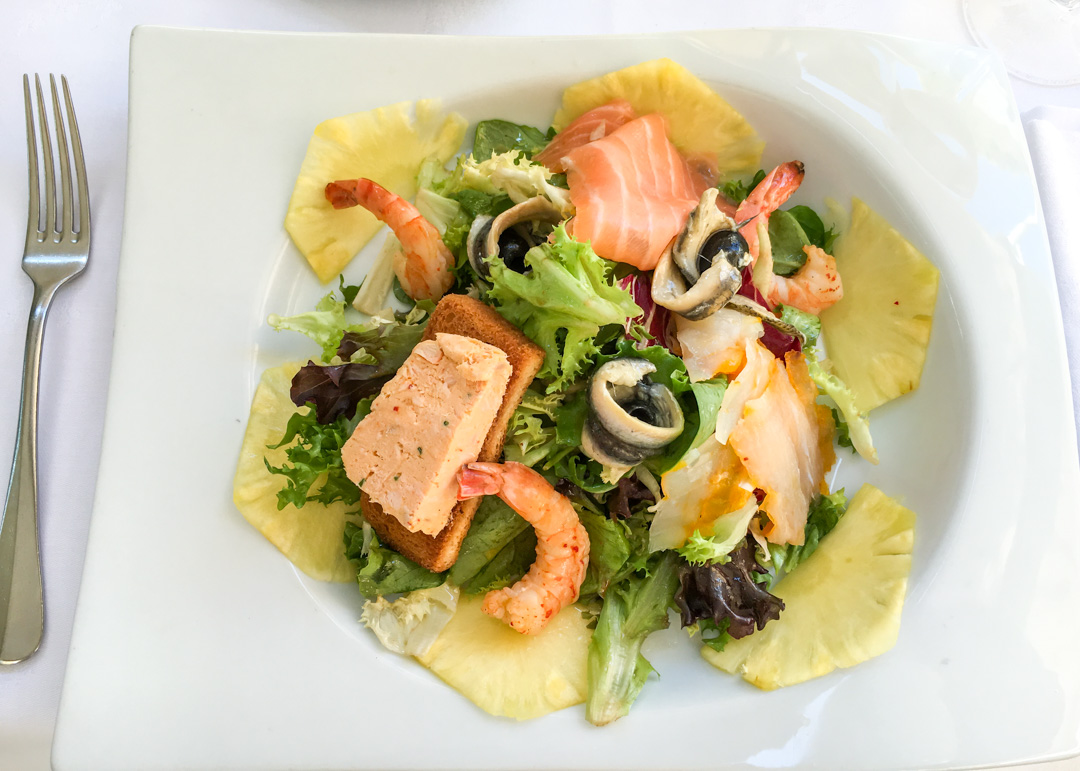





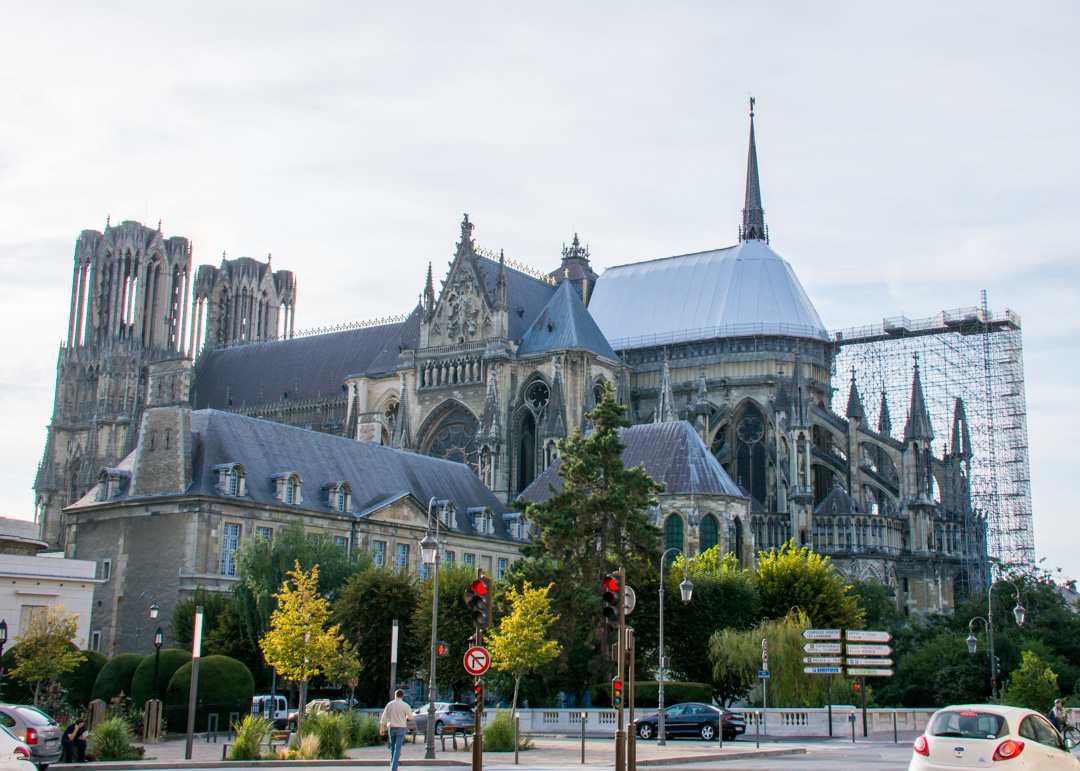
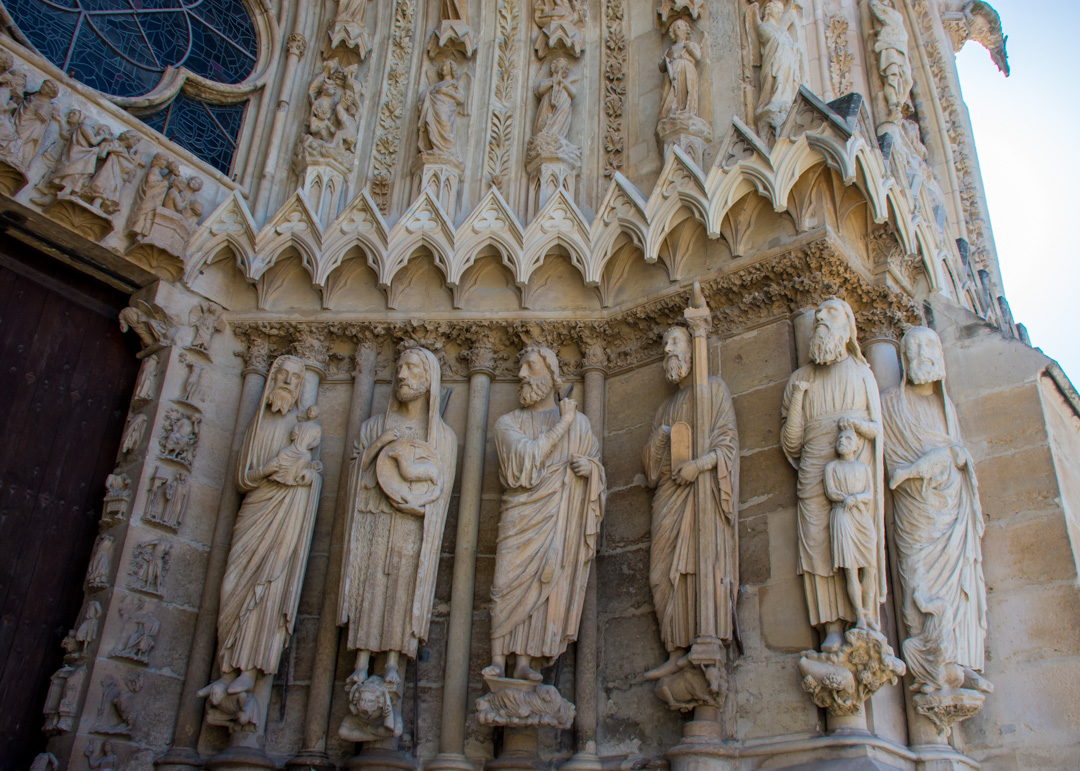














































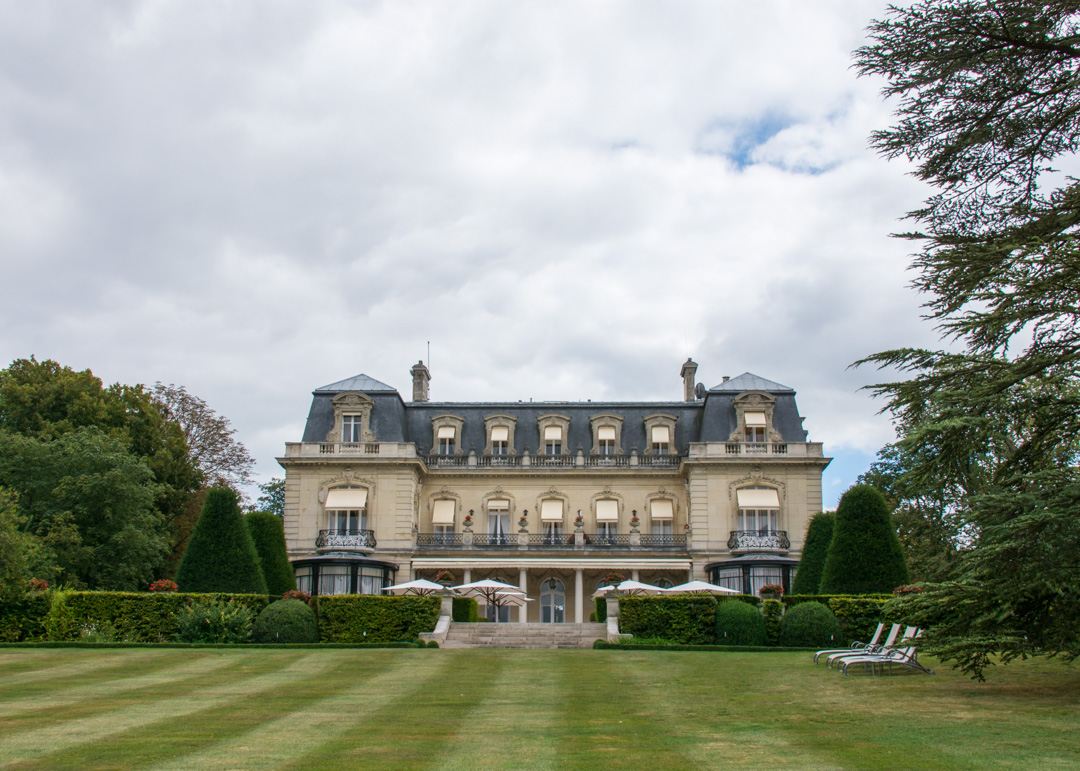







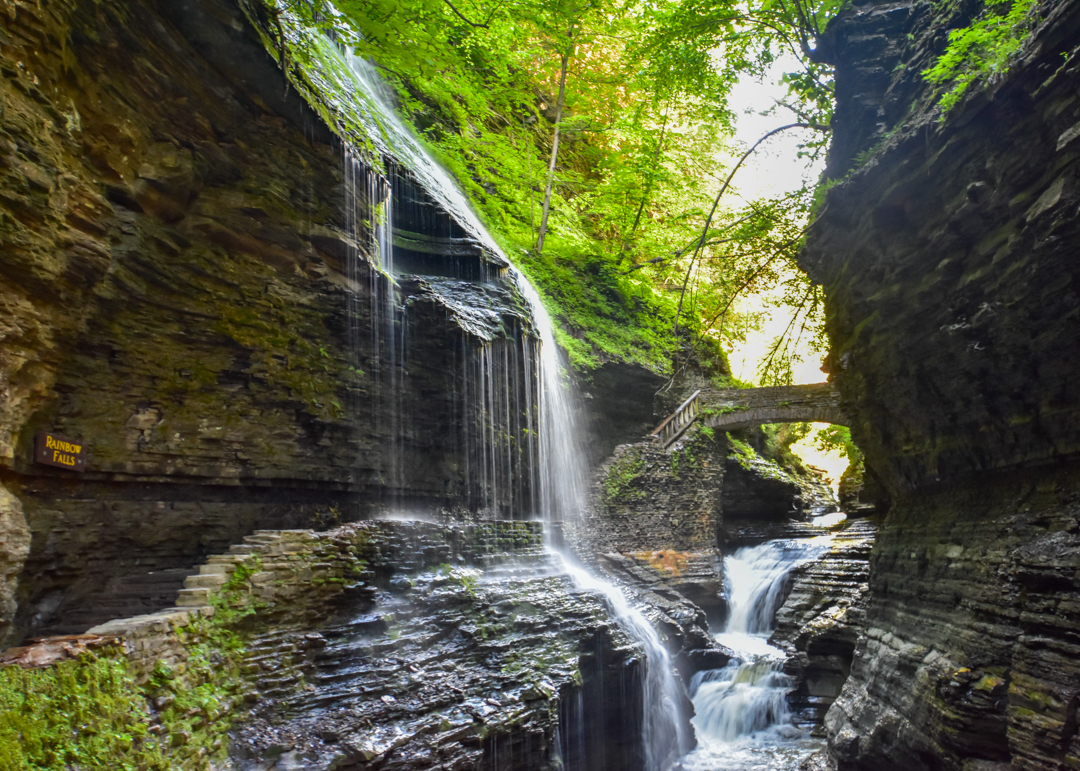



I loved this trip.
My only complaint is that is made me long for a glass of two of bubbles at not even noon and a nice big plateau of seafood.
AHHH You did it again.
There’s nothing wrong with a glass of bubbly before noon…the French certainly don’t mind! 🙂 Thank you!